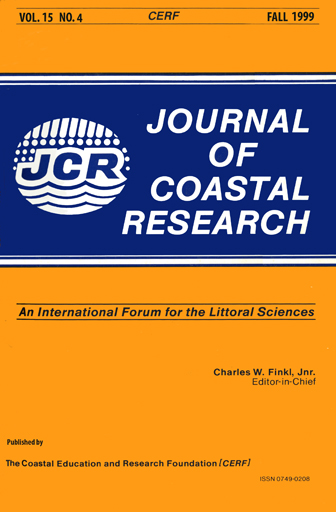Rain-Induced Beach Processes; Landforms of Ground Water Sapping and Surface Runoff
Keywords:
Swash groove, furrow-and-ridge structure, shore-normal furrow, rhomboidal and dendritic rills, box canyon, sheetwash, swash, backshore, beach cusps, Gulf of Mexico, Mississippi, seasonal beach changes.Abstract
Intensive rainfall events, associated with frequent passage of polar and Pacific maritime weather fronts, influence erosion and sand transfer between backshore and offshore zones during wind-depressed tidal stages on Mississippi and other microtidal northern Gulf of Mexico beaches. Intensive rainstorms, associated with high tides, due to onshore winds are likely to result in powerful sheetwash erosion and relatively less significant channel erosion in the backshore. Low tides and steeper runoff channel gradients during offshore winds, on the contrary lead to more intensive channel erosion and miniature box canyon development. Sizable meandering and braided drainage channels cross and erode the backshore plain. Erosion by sapping involves a progression that starts with small-scale features. Ground water emergence in fluted furrow-and-ridge structures, developed in backwash groove fields and rhythmic sets of shore-normal furrows, usually in combination with the sweeping swash currents, initiate dendritic rills and from them, miniature box canyons. Although ubiquitous probably on all sand beaches, the first three structures apparently have not been discussed in the literature. Seepage of fresh ground water drives the process during falling and low tide stages. Sea water emission from foreshore sands did not play a appreciable role in the initiation of dendritic rills and miniature box canyons.Downloads
Published
1999-10-23
Issue
Section
Articles


